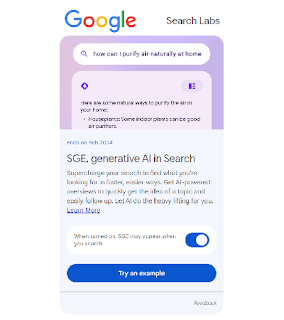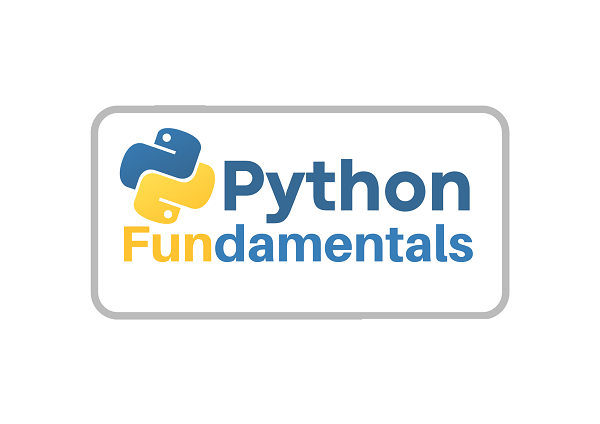What is Deep Learning: How it Works, Concept, Types, Applications
What is #deeplearning, and how is it different from traditional machine learning?
Synopsis: This blog explains the concept of deep learning, the difference between deep learning and machine learning, the importance of neural networks in deep learning, and the applications of deep learning in data analysis. It also covers the benefits and challenges of using deep learning in various industries.
In the world of Artificial Intelligence (AI), Deep Learning is one of the most fascinating and rapidly growing fields. It has
shown remarkable success in various applications, from image and speech
recognition to natural language processing and game playing. Deep Learning has
the potential to revolutionize the way we live and work, and it's essential to
understand what it is and how it works. In this comprehensive guide, we will delve
into the concept of Deep Learning, starting with the basics and gradually
moving towards advanced topics.
Introduction to Deep Learning
Deep Learning is a subset of Machine Learning (ML),
which involves training artificial neural networks to learn from data. It is
inspired by the structure and function of the human brain, where neurons are
connected to form a complex network that processes information. Similarly, in
Deep Learning, we use artificial neural networks with multiple layers to learn
from large datasets.
Deep Learning has become increasingly popular in
recent years, primarily due to the availability of large amounts of data and
powerful computing resources. Deep Learning models have shown remarkable
performance in many challenging tasks, such as image and speech recognition,
natural language processing, and playing games.
How Deep Learning Works
Deep Learning models consist of multiple layers of
artificial neurons that are connected to each other. Each neuron receives input
from other neurons in the previous layer and applies a mathematical function to
produce an output. This process continues until the final output is generated.
The key to the success of Deep Learning is the ability
of the neural network to learn from data. During the training process, the
network adjusts the weights and biases of the neurons to minimize the error
between the predicted output and the actual output. This process is repeated
multiple times until the network achieves the desired level of accuracy.
Here's a step-by-step explanation of how
Deep Learning works:
1. Data Preparation:
The first step in Deep Learning is to prepare the
data. This involves collecting and organizing the data in a way that the neural
network can understand. The data is then split into a training set, a
validation set, and a test set.
2. Building the Neural Network:
The next step is to build the neural network. This
involves designing the architecture of the network, which includes the number
of layers, the number of neurons in each layer, and the activation functions
used. The architecture of the network can vary depending on the type of problem
being solved.
3. Training the Network:
Once the neural network is built, it needs to be
trained on the data. During training, the network adjusts its parameters to
minimize the difference between its predictions and the actual values. This is
done using an optimization algorithm, such as gradient descent.
4. Validation:
After the network is trained, it is validated using
the validation set. This helps to ensure that the network is not overfitting
the training data and can generalize to new data.
5. Testing:
Finally, the network is tested using the test set to
evaluate its performance on unseen data. The performance metrics can vary
depending on the type of problem being solved, but commonly used metrics
include accuracy, precision, recall, and F1 score.
Overall, Deep Learning works by learning from large
amounts of data to make accurate predictions or classifications on new data.
The process involves data preparation, building the neural network, training
the network, validation, and testing.
How is Deep Learning Different from Traditional
Machine Learning?
Deep Learning and traditional Machine Learning (ML)
differ in the way they handle complex data structures and tasks. Here are some
of the key differences:
Data Representation:
Traditional Machine Learning methods require domain
knowledge to extract features from the raw data, which is a manual and
time-consuming process. In contrast, Deep Learning algorithms can automatically
learn relevant features from the raw data using deep neural networks.
Model Complexity:
Deep Learning algorithms can handle highly complex and
non-linear relationships in the data, whereas traditional Machine Learning
models are limited in their ability to capture complex relationships. Deep
Learning models can learn multiple levels of abstraction, which helps in
capturing complex patterns in the data.
Training Data Size:
Deep Learning algorithms require a large amount of
training data to learn complex patterns, whereas traditional Machine Learning
algorithms can work with smaller datasets.
Computation Power:
Deep Learning models require significant computational
power to train large neural networks, whereas traditional Machine Learning
models are computationally less intensive.
Interpretability:
Deep Learning models are generally considered as
"black boxes" due to their complex architecture, making it difficult
to interpret the results. Traditional Machine Learning models, on the other
hand, are more interpretable as the relationship between input and output is
often more transparent.
In summary, Deep Learning has an advantage in handling
complex and unstructured data while traditional Machine Learning is more
interpretable and efficient with smaller datasets.
Types of Deep Learning Networks
There are several types of Deep Learning networks,
each designed for specific tasks. Let's take a look at some of the most popular
ones:
1. Convolutional Neural Networks (CNNs)
CNNs are primarily used for image and video processing
tasks. They consist of multiple convolutional layers that extract features from
the input image and reduce its dimensionality. CNNs have shown remarkable
performance in image classification, object detection, and segmentation.
2. Recurrent Neural Networks (RNNs)
RNNs are used for sequential data processing tasks,
such as natural language processing and speech recognition. They have a unique
structure that allows them to store information from previous time steps and
use it to make predictions. RNNs have shown remarkable performance in tasks
such as language translation, speech recognition, and sentiment analysis.
3. Generative Adversarial Networks (GANs)
GANs are used for generative tasks, such as image and text
generation. They consist of two neural networks, a generator, and a
discriminator, that compete against each other in a game-like setting. The
generator tries to generate realistic data, while the discriminator tries to
distinguish between real and fake data. GANs have shown remarkable performance
in generating realistic images and text.
Applications of Deep Learning
Deep Learning has found applications in a wide range
of fields, from healthcare and finance to robotics and entertainment. Let's
take a look at some of the most significant applications of Deep Learning:
1. Image and Video Processing
Deep Learning has shown significant improvements in
image and video processing tasks, enabling computers to recognize objects and
patterns in visual data with remarkable accuracy. Here are some of the most
notable applications of Deep Learning in image and video processing:
Image Classification:
Deep Learning models can be trained to classify images
into specific categories, such as animals, objects, or landscapes. This
technology has a wide range of applications, from face recognition to
self-driving cars.
Object Detection:
Deep Learning can also be used to detect and locate
objects within images or videos. This is useful for applications such as
security surveillance, automated driving, and quality control in manufacturing.
Segmentation:
Deep Learning models can segment images into different
parts or objects, allowing for precise image editing and analysis. This
technology is used in applications such as medical imaging, where accurate
segmentation is crucial for diagnosis and treatment planning.
Image Generation:
Deep Learning can also be used to generate new images
that resemble real-life images. This technology has a range of creative
applications, such as generating photorealistic images of products for
advertising.
Video Processing:
Deep Learning can analyze and process videos in
real-time, enabling applications such as video stabilization, object tracking,
and facial recognition. This technology is also used in entertainment, such as
creating special effects in movies.
Overall, Deep Learning has revolutionized image and
video processing and has become an essential tool in various industries. With
continued research and development, we can expect to see even more advanced
applications in the future.
2. Natural Language Processing
Deep Learning has revolutionized the field of Natural
Language Processing (NLP), which is a subfield of artificial intelligence that
deals with the interaction between computers and humans using natural language.
Deep Learning models have shown impressive performance in a range of NLP tasks,
including language translation, sentiment analysis, text classification, and
text summarization.
Here are some of the most significant applications of
Deep Learning in NLP:
Language Translation:
Deep Learning models such as neural machine
translation (NMT) have significantly improved the accuracy of language
translation. NMT uses an encoder-decoder architecture that learns to translate
one language into another by training on large amounts of bilingual text data.
Sentiment Analysis:
Deep Learning models have shown excellent performance
in sentiment analysis, which is the process of determining the emotional tone
of a piece of text. Sentiment analysis is widely used in marketing, social
media analysis, and customer feedback analysis. Deep Learning models can
accurately classify text as positive, negative, or neutral based on the
sentiment expressed in the text.
Text Classification:
Deep Learning models have been used for a wide range
of text classification tasks, such as topic classification, spam detection, and
sentiment analysis. These models can automatically learn to classify text based
on its content, and they can be trained on large datasets to improve their
accuracy.
Text Summarization:
Deep Learning models have been used to generate
summaries of long pieces of text automatically. These models can be trained on
large amounts of text data and can learn to identify the most important
information in a piece of text and generate a summary that captures the essence
of the text.
Overall, Deep Learning has revolutionized NLP and has
enabled significant advances in language processing tasks. Its ability to
automatically learn from large amounts of data has made it a powerful tool for
improving the accuracy and efficiency of NLP systems.
3. Healthcare
Deep Learning has the potential to transform the
healthcare industry in various ways. It has already been used in a wide range
of healthcare applications, such as disease diagnosis, drug discovery, medical
imaging, and patient monitoring.
Disease Diagnosis:
One of the most promising applications of Deep
Learning in healthcare is disease diagnosis. Deep Learning models have shown
impressive accuracy in detecting various diseases, such as cancer, Alzheimer's
disease, and diabetic retinopathy. These models can analyze medical images,
such as MRI and CT scans, to identify abnormalities and provide early
diagnosis. They can also analyze patient data, such as medical history and
symptoms, to assist doctors in making accurate diagnoses.
Drug Discovery:
Deep Learning is also being used in drug discovery,
which is a time-consuming and costly process. Deep Learning models can help
predict the efficacy of drugs and identify potential side effects, which can
accelerate the drug development process and reduce costs.
Medical Imaging:
Another significant application of Deep Learning in
healthcare is medical imaging. Deep Learning models can analyze medical images,
such as X-rays and MRIs, to identify abnormalities and assist doctors in making
accurate diagnoses. They can also enhance the resolution of medical images and
provide 3D imaging for better visualization.
Patient Monitoring:
Deep Learning models can also be used for patient
monitoring. They can analyze patient data, such as vital signs and medical
history, to detect any changes in health and alert healthcare providers in
real-time. This can help doctors provide early interventions and improve
patient outcomes.
Overall, Deep Learning has the potential to
revolutionize the healthcare industry by improving disease diagnosis,
accelerating drug discovery, enhancing medical imaging, and providing better
patient monitoring.
4. Finance
Deep Learning has significant applications in the
finance industry, such as fraud detection, credit scoring, and stock price
prediction.
Fraud Detection:
Financial institutions use Deep Learning models to
detect fraudulent transactions in real-time. Deep Learning algorithms analyze
large amounts of data, including transaction history, customer behavior, and
spending patterns, to identify anomalies that may indicate fraudulent activity.
Credit Scoring:
Deep Learning models can also be used for credit
scoring. Financial institutions can use these models to analyze customer data,
such as credit history, employment history, and income, to determine the
likelihood of loan repayment. This can help lenders make more accurate and
informed lending decisions.
Stock Price Prediction:
Deep Learning has been used in the stock market to
predict stock prices. Deep Learning models can analyze large amounts of
financial data, such as historical stock prices, trading volumes, and market
news, to make predictions about future price trends. These predictions can help
traders make more informed investment decisions.
Overall, Deep Learning has significant potential to
revolutionize the finance industry by improving decision-making processes and
reducing risk.
5. Robotics
Deep Learning has found numerous applications in the
field of robotics, ranging from autonomous vehicles to industrial automation.
Some of the key applications of Deep Learning in robotics are:
Autonomous Vehicles:
Deep Learning is a crucial technology for developing
autonomous vehicles, as it enables the vehicle to recognize objects, navigate
through traffic, and make decisions based on the surrounding environment.
Industrial Automation:
Deep Learning can be used to optimize industrial
processes, such as manufacturing and logistics. It can improve the efficiency
and safety of these processes by enabling robots to perform complex tasks with
greater accuracy and speed.
Object Detection and Recognition:
Deep Learning algorithms can be used to detect and
recognize objects in real-time. This capability is particularly useful for
robots that need to interact with their environment, such as drones or robotic
arms.
Human-Robot Interaction:
Deep Learning can be used to develop robots that can
interact with humans more naturally. This includes tasks such as speech
recognition, gesture recognition, and emotion recognition.
Overall, Deep Learning has the potential to
revolutionize the field of robotics and enable robots to perform tasks that
were previously thought impossible.
6. Entertainment
Deep Learning has also found applications in the
entertainment industry, especially in the areas of gaming, film, and music.
Some of the notable applications of Deep Learning in entertainment are:
Game Development:
Deep Learning techniques such as Reinforcement
Learning have been used in game development to create intelligent agents that
can learn and adapt to new environments. This has resulted in the creation of
more realistic and engaging games.
Film and Animation:
Deep Learning has been used in film and animation to
create more realistic characters and environments. For example, Deep Learning
models have been used to generate lifelike facial expressions and movements in
animated characters.
Music Composition:
Deep Learning has been used to compose music by
training models on large datasets of existing music. This has led to the
creation of new music styles and genres.
Overall, Deep Learning has the potential to
revolutionize the entertainment industry by enabling the creation of more
engaging and immersive experiences for users.
Conclusion
Deep Learning has revolutionized the way we solve complex problems in various fields. Its ability to learn from large amounts of data and make accurate predictions has made it a powerful tool for tasks such as image and video processing, natural language processing, healthcare, finance, robotics, and entertainment. As more data becomes available and more advanced Deep Learning models are developed, we can expect to see even more exciting applications of this technology in the future.




Comments
Post a Comment